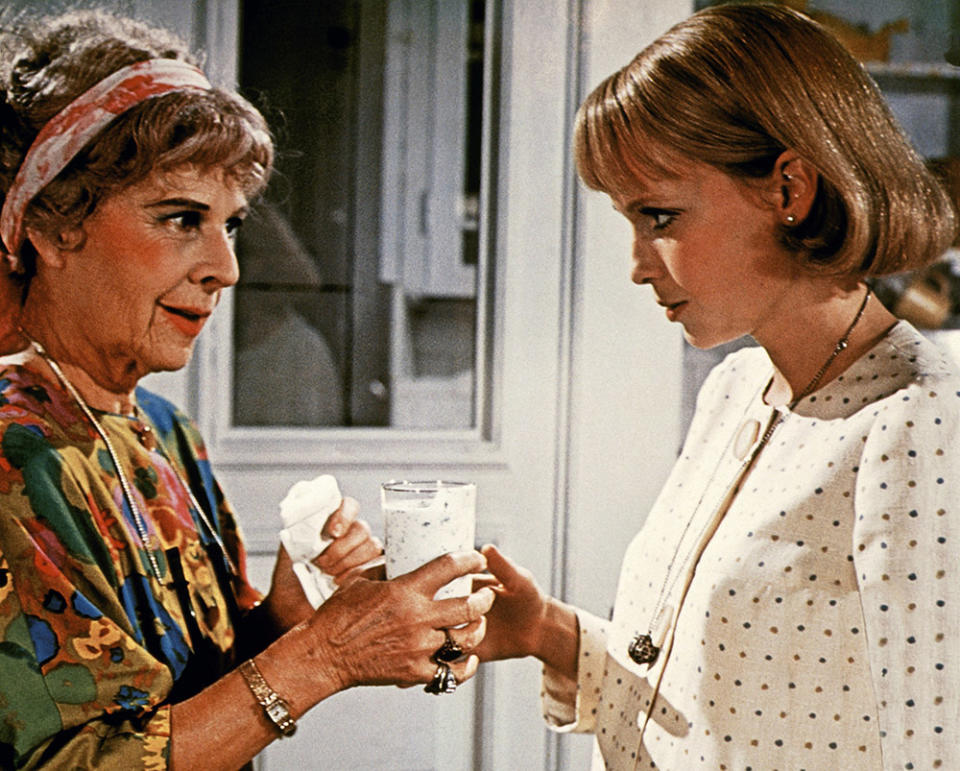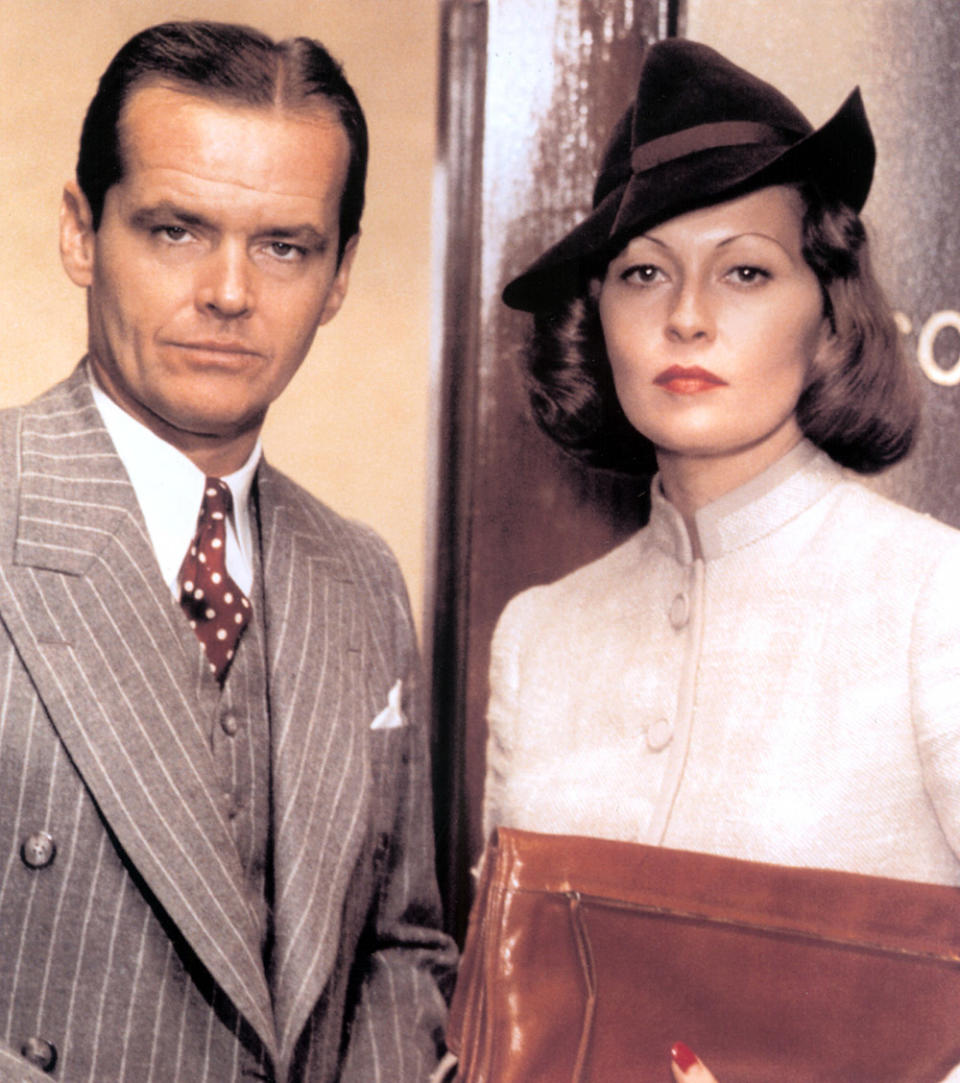Anthea Sylbert, ‘Rosemary’s Baby,’ ‘Chinatown’ and ‘Carnal Knowledge’ Costume Designer, Dies at 84

Anthea Sylbert, the two-time Oscar-nominated costume designer who worked on Rosemary’s Baby, Chinatown, Carnal Knowledge, Shampoo and Julia before becoming a studio executive and producer, has died. She was 84.
Sylbert died Tuesday in Skiathos, Greece, director Sakis Lalas told The Hollywood Reporter. Lalas just finished a documentary about Sylbert titled, My Life in 3 Acts.
More from The Hollywood Reporter
Anouk Aimée, Enigmatic Star of 'A Man and a Woman,' 'La Dolce Vita' and '8 1/2,' Dies at 92
Hiram Kasten, New York Comedy Club Staple and TV Actor, Dies at 71
Sylbert partnered with two-time Oscar-winning production Richard Sylbert on eight films and with his twin brother, Paul Sylbert — her first husband and another Oscar-winning production designer — on another three.
“Paul is the more bitter, more angry of the two,” she told Peter Biskind in 1993. “Someone once put it this way: Dick is more of a diplomat. He will put the ice pick somewhere in your back, you’re not quite sure, and you sort of feel tickled; Paul, while facing you, sticks it in your gut. I always used to think that if you put them together, they’d make the perfect person.”
In addition to Carnal Knowledge (1971), Sylbert did the costumes for director Mike Nichols on The Day of the Dolphin (1973) and The Fortune (1975) and for his Broadway plays The Prisoner of Second Avenue, the acclaimed Neil Simon comedy that bowed in 1971, and the Tom Stoppard-written The Real Thing, for which she received a Tony nomination in 1984.
It was Nichols who introduced her when she received a career achievement award from the Costume Designers Guild in 2005.
Sylbert was the rare woman in the New Hollywood era to segue from the creative side of filmmaking to the business side, first as an executive at Warner Bros. and United Artists and then as Goldie Hawn’s founding partner in a production company.
For the chilling Rosemary’s Baby (1968), which of course starred Mia Farrow as a naïve pregnant woman who comes to realize her elderly neighbors are members of a Satanic cult, director Roman Polanski told Sylbert to make the audience think “we’re doing a Doris Day movie,” she said in the 2006 book Designing Movies: Portrait of a Hollywood Artist.
“He wanted everything to look ordinary. People are put at ease by ordinary, and in fact, are put at ease by garish,” she said. “He didn’t want anything in the film to seem sinister.”

She reteamed with Polanski for the 1930s Los Angeles-set Chinatown (1974) and received her first Oscar nomination, then landed her second for her work in Fred Zinnemann’s Julia (1977), which takes place in Europe during World War II.
Sylbert dressed Jack Nicholson for Carnal Knowledge, Chinatown, The Fortune and Elia Kazan’s The Last Tycoon (1976). “He actually gave me the best compliment I ever got as a costume designer,” she recalled. “He said, ‘When The Ant [his nickname for her] does your clothes, you don’t have to act as much.’”
Born in Brooklyn on Oct. 6, 1939, Anthea Giannakouros studied art history at Barnard College and fashion at the Parsons School of Design, worked as a researcher for a Broadway costume designer and did off-Broadway plays like P.S. 193 and The Chief Thing.
She married Paul Sylbert in 1965, and they worked together on her first movie, The Tiger Makes Out (1967), directed by Arthur Hiller and starring Eli Wallach, Anne Jackson and, in his first movie, Dustin Hoffman. In Europe, brother-in-law Richard introduced them to Polanski.
Sylbert designed costumes for Garson Kanin’s Some Kind of a Nut (1969) and Where It’s At (1969) and Elaine May’s A New Leaf (1971) and The Heartbreak Kid (1972), then captured swinging Beverly Hills in the year 1968 with her clothes for Shampoo (1975), one slinky, sequined black dress worn by Julie Christie in particular.
“When she came to the fitting for that dress, she didn’t like it,” Sylbert said. “She thought that maybe it should be cut low in the front. And the director [Hal Ashby] came to the fitting room and said, ‘Can’t you just cut it a little bit?’
“And I said, ‘No, not this dress. I’ll design a whole other dress. But this dress is this dress. The joke is, she’s up to here [to her neck in the front], and then she turns around and you see the crack in her ass.’”
Sylbert also worked on The Illustrated Man (1969), Peter Yates’ John and Mary (1969) — with Farrow again — Stuart Rosenberg’s Move (1970), Mark Rydell’s The Cowboys (1972), Robert Benton’s Bad Company (1972) and John Guillermin’s King Kong (1976) before disagreements over the costumes in Norman Jewison’s F.I.S.T. (1978) got her thinking about a career change.

She was hired as vp production at Warner Bros. under John Calley, then moved to United Artists, where she had the same title and worked alongside Paula Weinstein, then president of motion picture production at that studio.
For about a decade, Sylbert and Hawn — they first worked together on Shampoo — led a Disney-based production company, and she produced such films as the Hawn-starring Protocol (1984), Wildcats (1986), Overboard (1987) and CrissCross (1992), plus My Blue Heaven (1990) and Something to Talk About (1995).
She and Weinstein shared an Emmy for outstanding made for television movie for producing 1995’s Truman, starring Gary Sinise as the 33rd U.S. president.
She divorced Paul Sylbert (One Flew Over the Cuckoo’s Nest, Kramer vs. Kramer, Heaven Can Wait) in 1984, and she married Mean Streets actor Richard Romanus — he was in Protocol — the following year. They went on to write and produce the Lifetime telefilms Giving Up the Ghost and If You Believe in 1998 and ’99.
The couple moved to the Greek town of Skiathos in 2000 and were declared honorary citizens in 2021 before Romanus died in December.
Survivors include her stepson, Robert Romanus.
Best of The Hollywood Reporter

 Yahoo News
Yahoo News 
